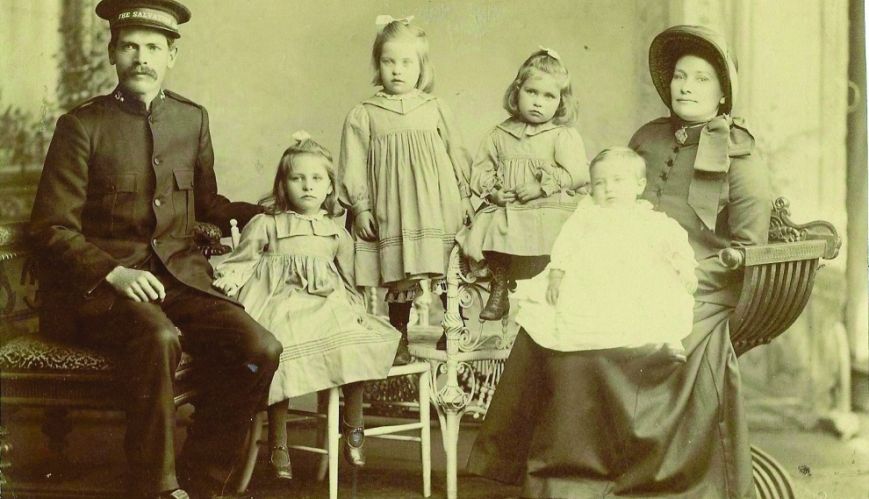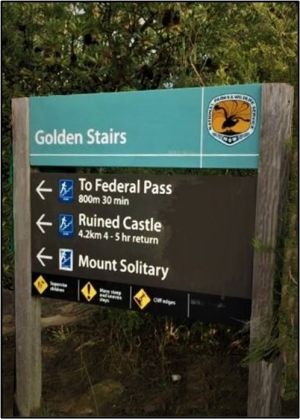On the trail of the Golden Stairs

On the trail of the Golden Stairs
Captain David Southwell, shown years later with his wife Sarah and four children. David is the grandfather of Lieut-Colonel Ian Southwell.
I remember my grandfather, Envoy Bramwell Daniel Hoepper, telling me the story of The Salvation Army’s relationship to the Golden Stairs near Katoomba in the Blue Mountains of NSW.
The stairs form part of a well-known bush track that runs from the Narrow Neck Plateau to the Federal Pass and on to an outcrop of large rocky boulders called the Ruined Castle. The scenic beauty – including the stairs and the steep gradient, the cliffs and the uneven, narrow path – is well documented. What is less documented is the story linking The Salvation Army with the name ‘Golden Stairs’.
Researching the local history, such as the Golden Stairs, often exists in folklore, that is, local traditional beliefs, customs and stories, orally passed between generations. The stories or folk tales are often myths and only exist to give wisdom or support collective memory. Many of the stories linking The Salvation Army and the Golden Stairs appear in the form of a folk tale. Folk tales have their place in every culture and organisation. However, modern ideologies applied to history often attempt to dismantle Christian meaning in these stories.
 A sign in the Blue Mountains on the trail of the Golden Stairs.
A sign in the Blue Mountains on the trail of the Golden Stairs.
Dismantling folk tales takes three steps: turning historical events into folk tales, arguing the meaning has little relevance to modern culture and creating a new folk tale to replace the former. These ideologies believe truth and evidence do not matter. This is counter to a Christian worldview. Such ideologies have been applied to the history of the Golden Stairs, and there is a danger the story may be lost.
Leaving a legacy
Recent research has revealed evidence that the Golden Stairs are named in connection with The Salvation Army. The pass was built by a shale miner, Mr Parker, in May 1889 and named Parker’s Track. Sometime before June 1893, the track became known as the Golden Stairs. The Salvation Army fits well into the time frame.
The Army was established in Katoomba in March 1890, and by August 1891, Salvationists were visiting the shale miners in the valley to hold Christian services. There were several songs Salvationists may have sung that included the words ‘golden stairs’; and there is a strong suggestion that this term was applied to the pass.
In March 1893, the Army held its first indoor meeting in the village. Soldiers and officers continued to travel the pass to hold services for the miners at least until 1895. One Salvationist, Captain David Southwell, was given the use of a miner’s bed when he conducted meetings. It may have been Captain Southwell who introduced Emma BoothTucker’s well-known song ‘Climbing up the Golden Stair’ to the miners in 1895. This was the song remembered by the narrators years later.
When the Army closed the Katoomba Corps by 1897 [it reopened in 1914], Salvationists had left a legacy in the name of the Golden Stairs, which was officially gazetted in February 1970.
The evidence presented in the research makes it clear that the narrative of the Golden Stairs contains many historical facts that link The Salvation Army to the name of the stairs. Therefore, the story cannot be set aside as merely a folk tale.
*For the full article, see Garth R. Hentzschel, “The Golden Stairs: Folklore or historical fact?”, The Australasian Journal of Salvation Army History, Vol 6, Iss 2, 2021